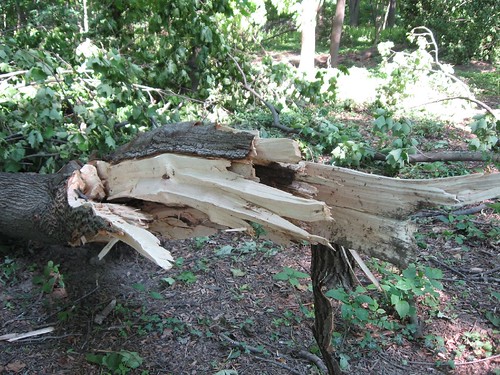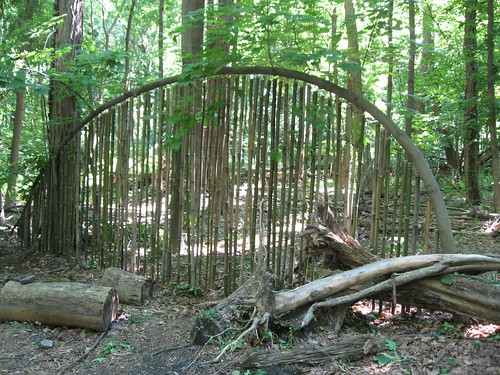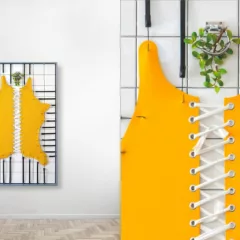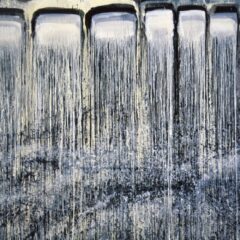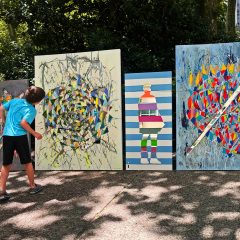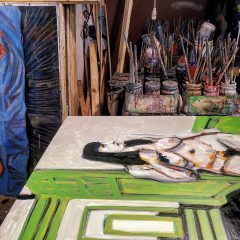Meetinghouse Road was closed thanks to fallen trees after this week’s violent storm. I almost turned around and went home. After all, I’ve been lost before around the Abington Art Center.
But feeling like I hated to have wasted my time getting there, I went to the next corner and voila! I knew where I was and I knew I could get there after all.
The Art Center had suffered the loss of a number of trees. I took a bunch of pictures of the broken trunks and branches.
As usual, when I tried to follow the map I was flummoxed. I just can’t use a map once I am out of the city. It didn’t make a lot of sense to me. I tried to use the buildings to orient myself. After all, they have four corners, just like the block where I live.
I finally sought help and got it.
Once I figured out my relationship to Jenkintown Road (something relatively straight and made by a human), I was off and running (and even took a successful chance or two on directions after that).
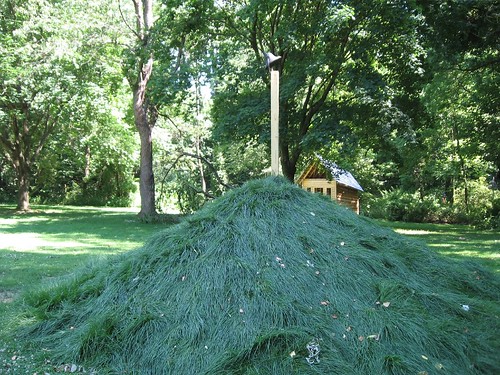
Nick Paparone and Jamie Dillon, Born to be Wild, sod, dirt, cast iron and wood
While I enjoyed all the pieces I saw, what I liked most was Nick Paparone and Jamie Dillon‘s hysterical hairy hill, Born to be Wild (see Annette’s post). A deadpan berm covered with sod and topped by a bell for the king of the hill to toll, it could have passed for a bit of golf course furniture, but the rough was so rough as to suggest perhaps Oscar the Grouch pushing up from the earth, or even the earth itself bubbling up and calling for attention. It’s scale is friendly and kid size.
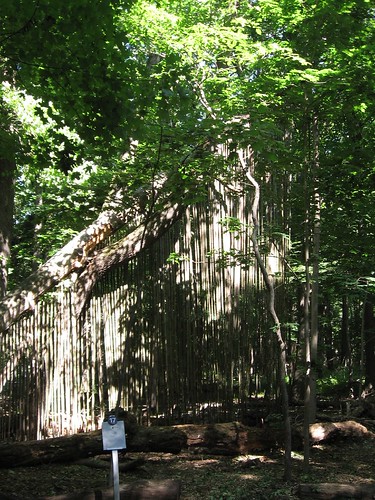
Sylvia Benitez, Hatshepsut, bamboo; this section reminded me of a harp
I also enjoyed Sylvia Benitez‘s Hatshepsut, which seemed to talk directly to Winifred Lutz‘s long-standing Reclamation Garden, and ongoing project of ordering the natural materials already there in the forest.
Benitez, who is the 2008 Artist in Residence at Abington, using bamboo poles found on site, has created barriers, one which reminded me of a harp, the other of a lyre. The strings are the hanging bamboo poles, branches the framework. Named after female Egyptian Pharaoh Hatshepsut, the work has a kind of art deco quality, the barricades creating a sort of room for meditation that also referrs beyond the almost interior space to the vertical trunks of the forest around it.
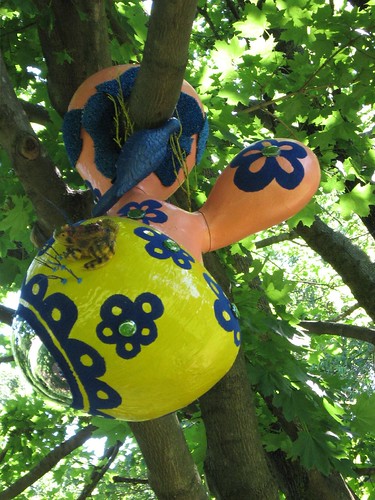
Roberley Bell, Flower Blobs, 2008, painted fiberglas and plastic decorations
Roberley Bell’s comic Flower Blobs channel Victorian kitsch ceramic critters and pool toys. The elevation to the branches of the tree (where it sits accompanied by smaller creatures on its back–a frog and a bird) turn it into a bird as well as a lost kite tangled beyond reach. I liked the idea of connection of its mirrored bottom to the ground where two similar convex mirrors rest on wood chips. I found myself wishing the finish of the blob itself were more consistent and smooth.
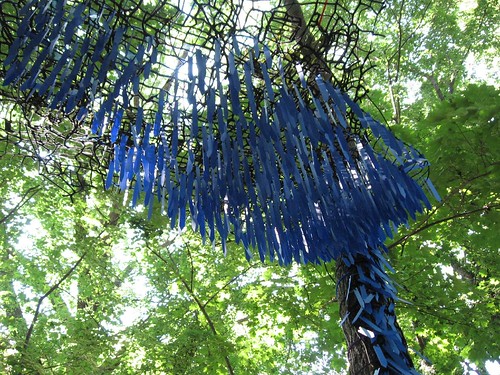
Caroline Lathan-Stiefel, Madder Bloom, detail, pipe cleaners, plastic bags, fabric, pins, straws and seed tags
Caroline Lathan-Stiefel’s Madder Bloom also creates a small room in the woods; the parts seemed better than the whole, but the spider-webby lace backdrop and the blue hanging seed tags, which make a sort of canopy, were wows, and the stringiness did succeed in catching the light in the midst of the visual competition of the forest itself.
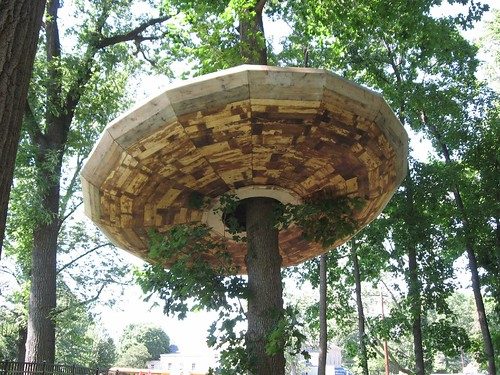
I got a kick out of Actual Size Artworks‘ Others, a space ship impaled on a tree trunk, made from reused barn siding. It was beautifully made, and if I left the whole alien invasion aside, I could get behind the trees as others in our own world. Certainly I was an other in that forest, removed from my own habitat.
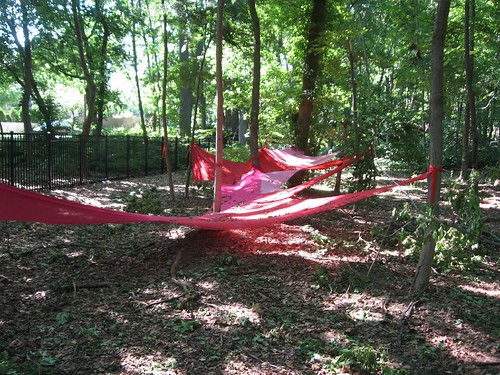
Carole Loeffler, Floating, Fluttering, Gliding, Hovering, synthetic fabric and thread, 2008
Carole Loeffler‘s stretched fabric interested me most for the way it caught the light and reflected its reds onto the ground. I wasn’t game enough to crawl under it army style (was I dressed for the woods? no I was not; big mistake). I think that might have been more fun than just looking. But somehow, I wanted it to be even bigger (or maybe more of them–a whole school of these red creatures), moving through the woods to some distant point.
This exhibit was curated by Sue Spaid, who took over from Amy Lipton, and I’m glad to see she’s having some fun.
The show also has an indoor component that relates to the outdoor work. Mike Ross‘ outdoor piece isn’t yet installed, but he did have a video of an interactive piece in the indoor exhibit. “Hovering Above” runs until November 30, 2008.
I took lots of pictures of broken trees, a crushed fence, a bunny rabbit. They’re all on Flickr.


